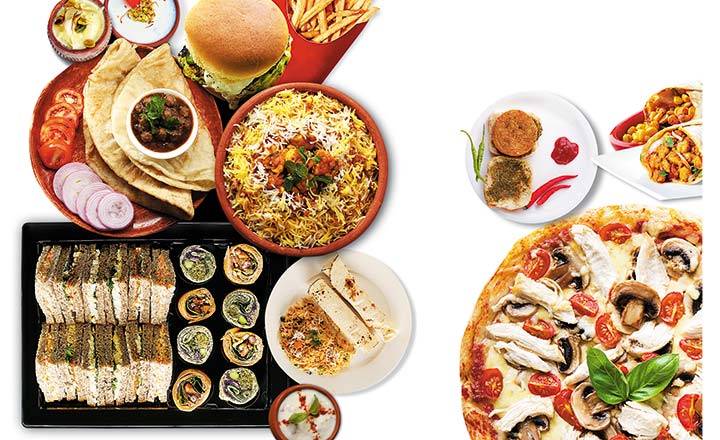Going by the numbers, it is clear that Indians are increasingly spending less time in their kitchens. The organised food services market is already valued at over $15 billion. Of this, cafes and quick service restaurants (QSR chains), which offer food on the go and deliveries, account for 25%, and are expected to grow at 18% to reach $2.86 billion by 2020.
While the QSR space has been dominated by multinationals such as Domino’s Pizza, McDonald’s, Pizza Hut, KFC and others, a growing breed of firms is trying to expressly cater to the Indian palate. Chains such as Faasos, which started out by selling wraps and rice items, Goli Vada Pav, Mast Kalandar and more recently Box8, which serves sandwiches and biryanis, are making their presence felt in the market. For Jacob Kurian, partner at private equity firm New Silk Route (NSR), the influx has been long overdue. Kurian, who is also the CEO of fast food chain Vasudev Adiga’s, says, “80% of the Indians prefer local food.” There is little surprise then that these companies are taking local flavours to the consumers.
Vada pav to biryani
Goli Vada Pav plans to take Mumbai’s flagship snack, the vada pav, all over the country. “It is almost like a burger. An easy mix of potato and wheat, the product has an universal appeal,” says Venkatesh Iyer, who along with Shivdas Menon, established the first outlet in Kalyan, Mumbai in 2004. The company initially started out with 15 stores, with kitchens. “But we soon realised that if we want to expand to even 100 stores, focusing on kitchens would kill the business. So, we opted for the franchisee route,” explains Iyer. Today, Goli has about 350 stores in 90 cities. Of this, only five are owned by the company. The vada pav chain though is looking to add more stores besides improving its delivery. “15% of Goli’s sales come through Swiggy,” shares Iyer.
The company has been profitable for the past three years, logging a turnover of Rs.55 crore. One of the reasons for this is low rentals. “We work on economies of scale. Since, we forayed into tier-2 and tier-3 cities before targeting the metros, we have been able to cut rental costs,” says Iyer.
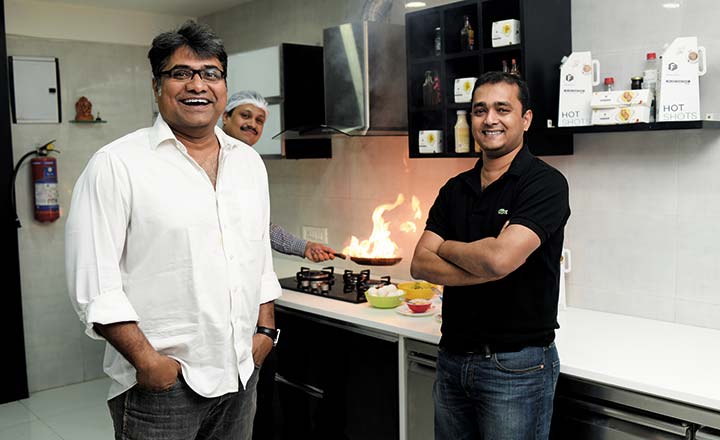
On an average, Goli does about 120 transactions per day per store, with a ticket size of Rs.55. But it’s not just its success that is attracting vendors and HNI investors, it’s the asset-light model. From raising about Rs.5 crore in 2008, it went on get Rs.21 crore in 2011, which included an investment by Venture East. “Goli has managed to scale up to 350 stores in a very short period by opting for standardisation and hygiene,” says K A Srinivasan, CFO, Ventureast. Besides standardisation, what worked for Goli, says Iyer, was that the product was already known and they didn’t have to introduce something new.
But where Goli is happy sticking to just one product, Faasos has expanded its range from just wraps to include breakfast options, biryanis and tea as well. Started by Jaydeep Barman and Kallol Banerjee in January 2011, Faasos logs 15,000 transactions on an average per day, and recorded revenues of about Rs.42 crore in FY15.
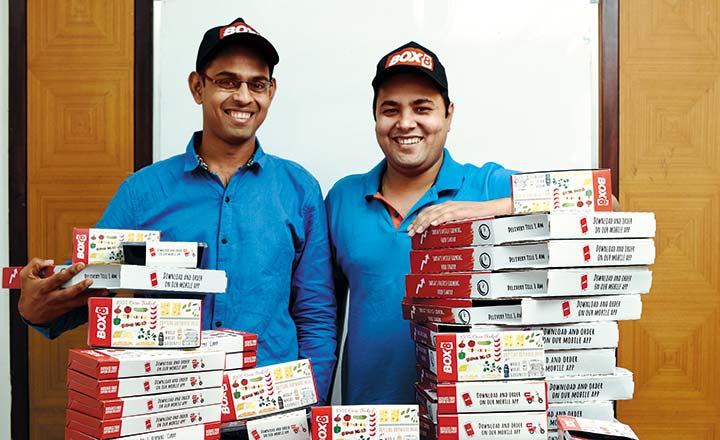
According to Revant Bhate, marketing head, Faasos, deliveries make up 80% of its business, which are driven through fulfillment centres. “Our aim is to establish as many fulfillment centres as possible.” As of now, the company has set up about 150 such stores in 15 cities (170 locations) at a total investment of Rs.150 crore. Such stores break even within two or three months on an average, shares Bhate, adding, “As we have enough latent demand in the cities, we keep adding about three to four centres every month.”
Unlike Goli, Faasos takes full control of the business right from food preparation and logistics to technology and doesn’t outsource anything. The company gets kitchens on lease, which don’t add much to rental costs as they are typically small places used just to prepare the food. “Some people enter through manufacturing, some through deliveries. We want to manage all of it and come up with a quality product,” says Barman, adding that the company earns about 60% gross margins (after discounts). “We make more than 30% per order after all the food costs, delivery and salaries are paid off and should be profitable by the end of 2016,” adds the co-founder. The brand now wants to increase its presence to about 30 cities over the next couple of years and is planning to expand horizontally by including more categories such as world cuisine, South Indian and Chinese.
Product play
But diving into world cuisine, Mexican, to be precise, didn’t work out so well for Box8. Set up in January 2014, Box8 co-founder Anshul Gupta says the success of a QSR brand depends on the product. “We initially started with a Mexican concept which didn’t do well. What we took away from that episode was that the product needs to resonate with the typical Indian consumer. Thus, you will find products such as sandwiches, biryani and various curries in our menu now,” explains Gupta.
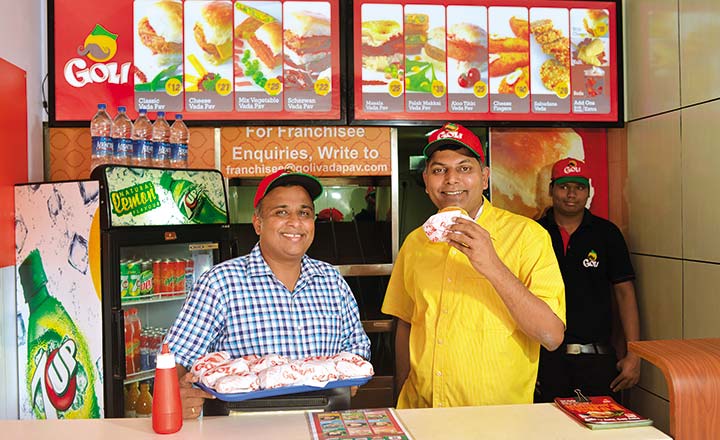
The company processes an average of 6,000 orders at a ticket size of about Rs.400-450 in three cities namely Pune, Mumbai and Bengaluru. It is now focusing on driving up its volumes through deliveries. “We are working on a typical delivery model. In fact, we are almost a 100% delivery company. Customers can’t typically sit and eat at Box8,” says Gupta, adding that the delivery model has saved the company rental costs. “Because of our delivery model, our rentals have come down drastically. Also, we are no more dependent on malls and prime locations.”
The company, which raised Rs.21 crore from Mayfield, has about 55 stores from where raw materials and semi-processed food is outsourced. Though Box8 says that its in-house delivery systems help ensure great control end-to-end, there have been some quality issues. FDA slapped an improvement notice on Box8 as students suffered from food poisoning after consuming food supplied by the company at a conference last month. While Box8 claimed that it was the delay in serving the food at the venue that caused the problem, FDA inspection’s revealed that Box8 did not comply with all the required standards and the regulator has given time for the company to rectify its shortcomings. Refusing to comment on the issue, the company said it maintains rigorous quality standards during food preparation and delivery at all times.
While Box8 is focusing solely on delivery, Mast Kalandar is looking at both dine-in and delivery options. “In this matter, we are quite unique. We have a retail outlet called Mast Kalandar and an exclusive delivery model called Mast Kalandar Dabbawalla,” shares Gaurav Jain, who along with Pallavi Gupta came up with the idea of establishing a QSR chain focused on North Indian food combos at a reasonable price point. Jain says, “We don’t look at standardisation like McDonald’s. The same type of dal tadka is practically not possible, it’s still a creative product.”
The company’s operating margin is about 22-23% on revenues of Rs.50 crore. With about 72 outlets (60 retail outlets and 12 delivery outlets), it is present in Bengaluru, Hyderabad, Chennai and Pune. “MK Dabbawala was started a year back and it already contributes 25-30% to our revenue. We want to expand it as it is more scalable than retail,” he adds. The company does 100-250 transactions on an average per day per store while its delivery business hits around 500-1,000 orders per day, with the ticket size ranging around Rs.250-300. To cater to its twin models, the company has a central sourcing facility from which vegetables and ingredients are sent to satellite kitchens, where the cooking takes place.
Like others, Mast Kalandar, which has invested Rs.55-60 crore in the business thus far, is looking to raise funds over the next two quarters, confident that people won’t get bored of the Indian cuisine.
Secret recipe
While all the chains are experimenting with products and models, it is quality assurance that sets apart QSR chains, opines Ankur Bisen, senior vice president, retail and consumer products division at Technopak Consultancy. A QSR chain is generally based on the hub-and-spoke business model, where hub is the base kitchen in every city while spoke is the outlet. “These chains work very differently. They may outsource ingredients from specific vendors whom they typically develop from scratch. This aspect gives QSR a stronger quality assurance,” says Bisen.
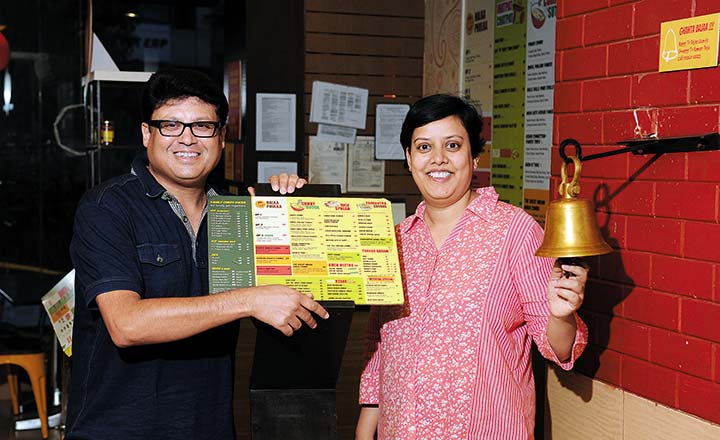
Kurian of NSR though opines that the trick is in following processes and systems. “While most restaurant chains are person-driven, a QSR chain needs to be standardised in every possible way,” he says. “Secondly, since the prices are generally kept affordable, increasing the volumes is the only way to bring in more money.”
Foreign brands such as Domino’s, which entered the country almost two decades back when there was no pizza culture in India, though pin their success on customer service. “QSR products are meant for immediate, short-term consumption and have a repeat purchase cycle. The consumer’s last experience influences future purchases. The waiting/turnaround time, hygiene and ambience are thus important factors,” says Murugan Narayanaswamy, senior vice president, marketing, Domino’s Pizza India, adding that chains must invest in technology. “Strategic investments in technology, leading to enriched customer experience is what Indian chains need to work on,” he adds.
Scaling up
But even as Indian QSR chains try and emulate their foreign counterparts, scalability has been a big issue. “The biggest challenge before the industry is scalability. We had a tough time initially. We didn’t know how to manage our supply chain. About three years back, we were selling about 3,000 items, which has now increased to about 50,000-60,000. Now, we have a clear strategy of sorting our supply chain and managing demand,” says Barman of Faasos.
Some of the older Indian QSRs, however, have struggled. Take Bengaluru-based United Pizza Restaurants, which has been operating US Pizza outlets since 1995. Founded by Vahid Berenjian and Akbar Khwaja, the company has almost 86 stores across 55 cities in India compared with Domino’s 1,004 stores across 230 cities. US Pizza has company-owned stores in Bengaluru, Mumbai, Pune and Ahmedabad while others are franchisees.
Despite altering the products to suit the Indian preferences earlier on, US Pizza has fallen behind multinational chains. “Within one-and-a-half years, we understood that if we don’t put the typical Indian taste in our pizzas, we aren’t going anywhere,” says Khwaja, co-founder and MD, US Pizza. The chain, which clocks a turnover of around Rs.43 crore, thus came up with Tandoori chicken pizza in 1996 and Pav bhaji pizza in 2008. “We serve about 24 salads today along with the pizzas. Out of these, at least five salads and four sauces are tailored to Indian preferences,” adds Khwaja. The company’s ticket size is about Rs.550 per meal and it sees an average footfall of 3,000 per month.
Bengaluru-based KaatiZone, which was founded in 2004, is another example. The company though has struggled to scale up due to funding constraints. It currently has about 15 outlets in Bengaluru. “We were based on a hub-and-spoke model where we manufactured centrally and delivered the items to the outlets. But due to limited capital access, in 2013 we had to change our model,” says Kiran Nadkarni, founder, KaatiZone. The company has been outsourcing most items since then. “There is a huge investment involved otherwise. I think we just need to handle the product development and recipe,” he adds.
So what’s the ideal business model? Kurian of NSR says, “There is no ideal business model for these chains. The only thing that creates a difference is rigorous control of sources, people, kitchen manuals, hygiene and packaging. It is all the more tougher for Indian chains to succeed because of the complexity of Indian food. Sambhar is way more complex than a burger at McDonald’s.” Kurian though adds that the companies must work out their processes before expanding operations. “McDonald’s took almost six years to get their supply chain correct. They didn’t think of first opening one or two stores and then deciding how to go ahead like many Indian chains.”
Besides scaling up and competing with foreign players with deeper pockets, the Indian QSR segment also has to deal with new concepts such as FreshMenu. Companies such as Box8 claim that even home cooked food is a competition for them. “I believe that food as a market is very personal. Moreover, it is still nascent in India and, hence, pretty tough to dominate,” says Gupta of Box8. Iyer of Goli agrees. “Multinational QSRs have evolved their model and now are exploring India. In our case, we have to evolve, explore, develop and create side by side, which is more challenging.”
But Kurian has some advice for Iyer and Gupta. Saying that international QSR brands too faced troubles early on, he adds, “Yum! Brands made a profit after almost 17 years in India while Jubliant Foodworks had to almost shut down thrice. Even though they’re the best right now, they had to learn how to scale up operations and cut overheads.” Nevetheless, he says, the potential for QSR chains is huge in India.
Only time will tell if the humble vada pav can replace the McAloo tikki, but it is clear that the ride isn’t going to be easy. For the customers, though, it’s a win-win.




